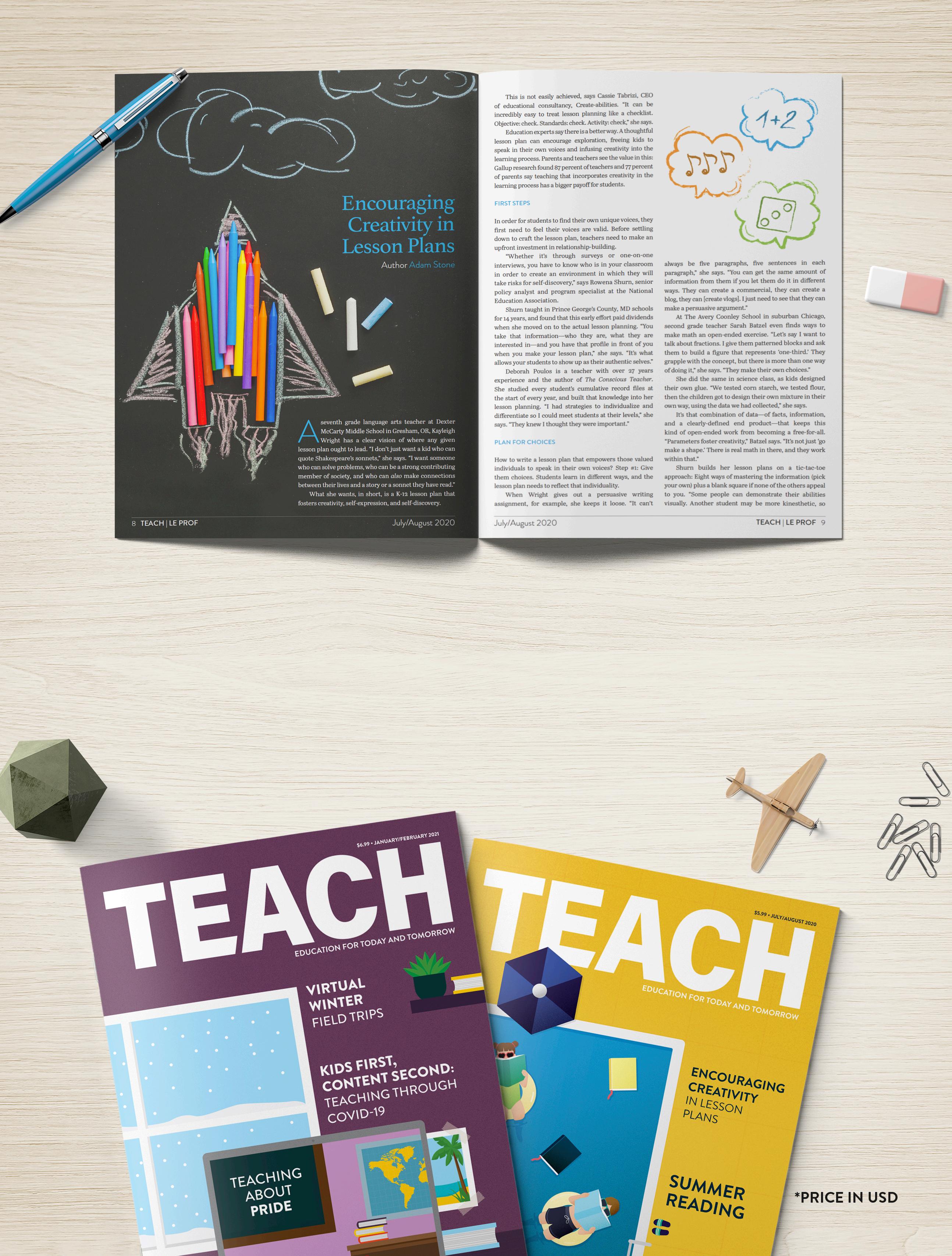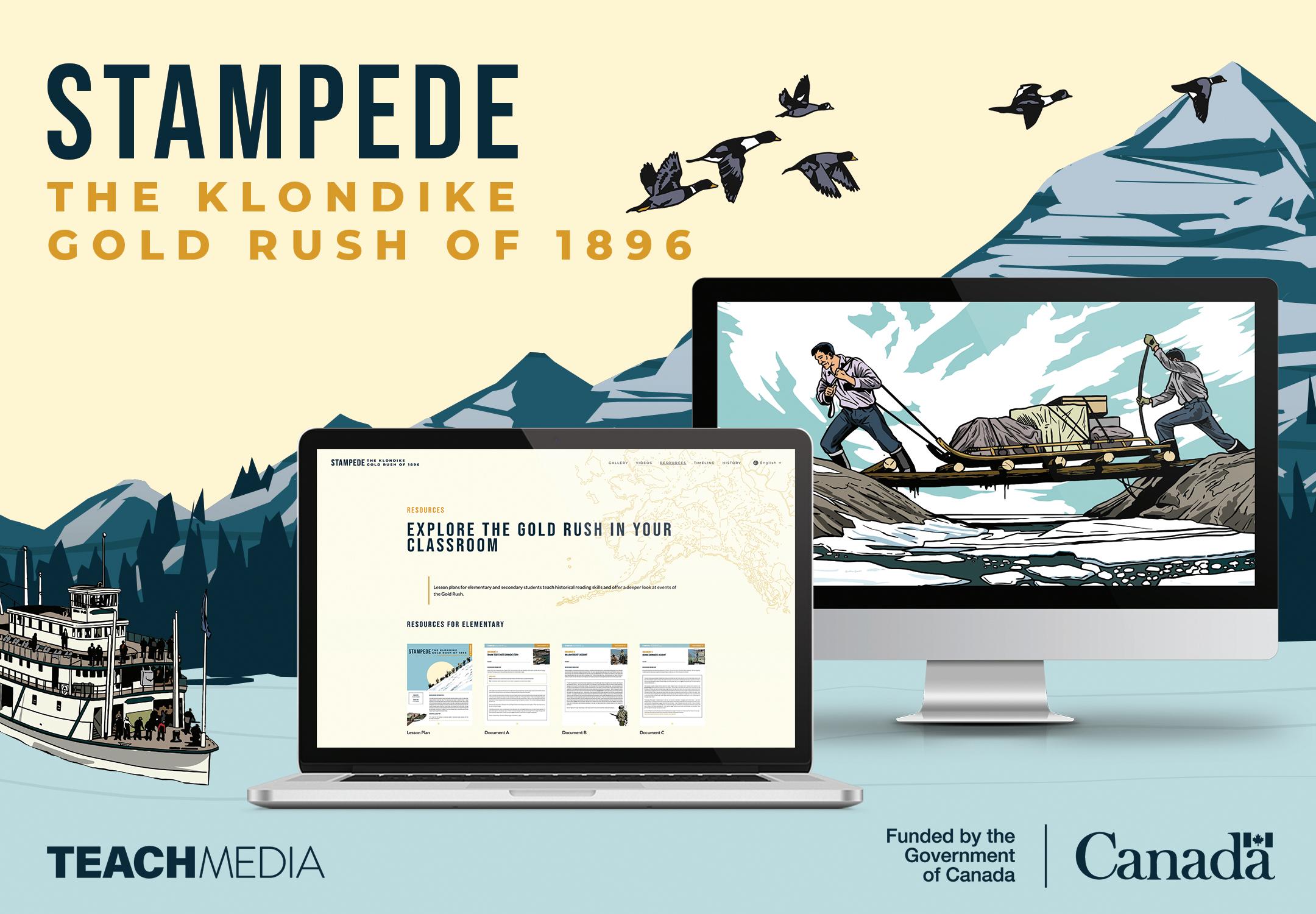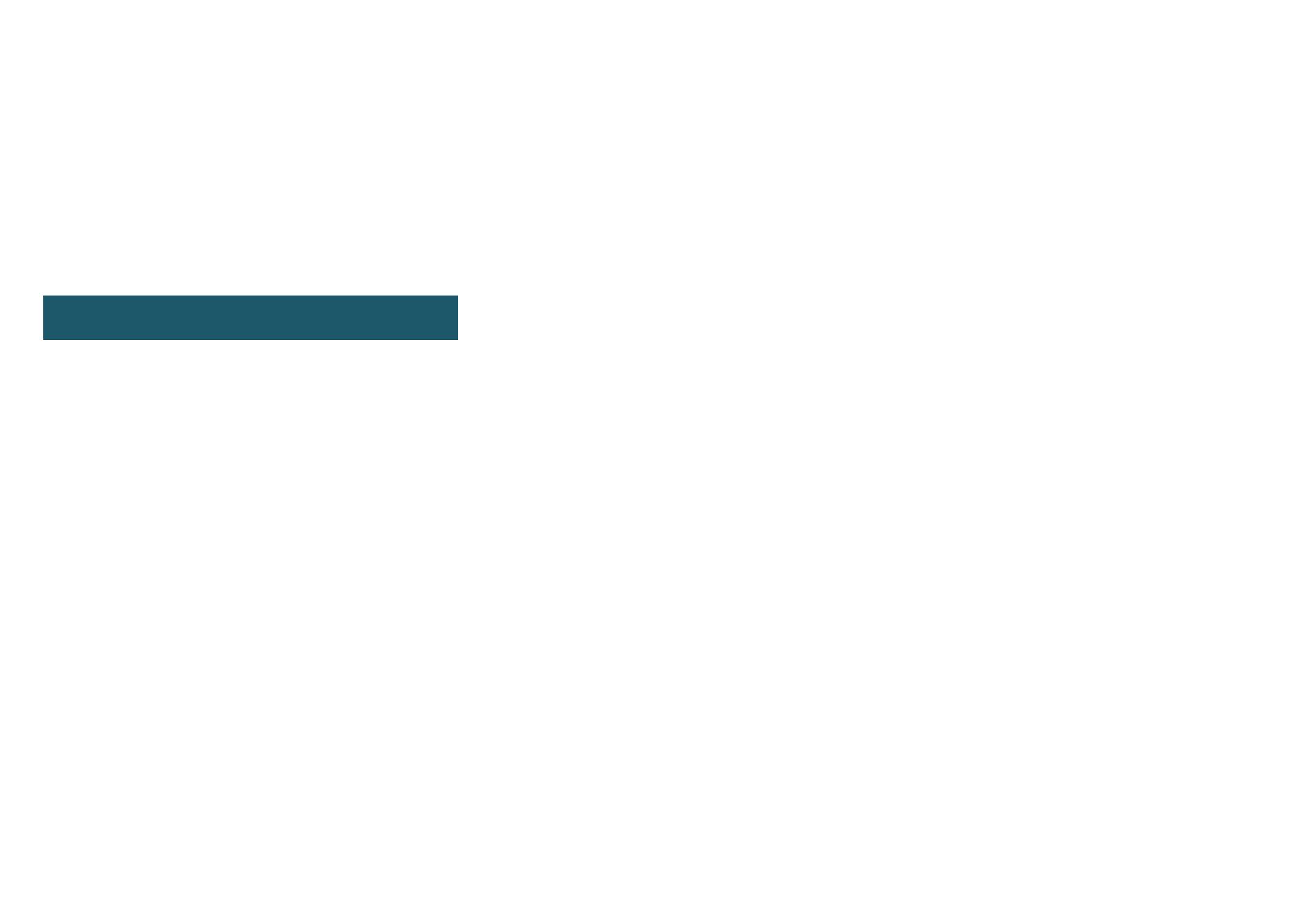
























































































































It has been 40 years since the Canadian Charter of Rights and Freedoms came into being during the tenure of then-Prime Minister Pierre Elliott Trudeau. This document has had a profound effect on Canada and Canadians ever since, but it has also raised plenty of questions. In this special issue all about the Charter, we explore the basic concept of rights and freedoms and how it is not as straightforward as it might seem. Take a look. You may be surprised at what you find.
Carolyn Gruske gets the ball rolling with a comprehensive overview of the Charter, its origins, and how it came to be entrenched in Canada’s constitution. We come away with the understanding that rights and freedoms are essential to living in a democratic society. Yet the politicians who crafted the Charter left out several key items, such as Indigenous rights and women’s rights, and although those rights were eventually added, the Charter still comes up short for many Canadians.
Equity practitioner Krystal Kavita Jagoo shines a light on areas where the Charter has failed to address the rights of those who are marginalized or generally discriminated against. Jagoo looks at the role educators can play in discussing the Charter’s shortcomings with students, while also suggesting courses of action for young people who feel disenfranchised by it.
An educator herself, Aleksandra Trivan Johnstone’s class consists of English Language Learners. When she teaches the Charter to her students, she focuses on exploring the empowerment of its language and how it evolved from the Canadian Bill of Rights in 1960. Read the article to find out how her students, many of them new to Canada, probe the language of these rights documents in order to understand their importance and how to make them better.
Jeney Gordon is also a teacher, one whose class consists of Grade 9 students. Her strategy for teaching Charter rights and responsibilities is to approach them from a teenager’s point of view. Throughout this examination, students have the opportunity to suggest how the Charter could be better and where it might be improved. Students undertake this task seriously; one year they even wrote to the Prime Minister to share their ideas!
Writer Deirdre Olsen explores what is meant by the phrase “peaceful assembly” and focuses on the so-called “Freedom Convoy” of February 2022 that took over downtown Ottawa for three weeks. This fascinating case study emphasizes the importance of having meaningful conversations about the Charter and how the human rights it protects have limitations in the real world.
Writer Fiona Tapp takes the concept of human rights and applies it to nature. That is, do natural environments have rights that should be recognized under the law? The Canadian Charter wasn’t conceived with that notion but currently there are initiatives, legislation, and lawsuits in play around the world that are incorporating the rights of nature concept.
CURRICULA delves deeper into nature rights and activates it with tasks and activities allowing students to construct their own thoughts on the subject. What should the rights of nature look like? Can the Charter be used to protect Canada’s natural environments? The lesson plan considers these questions and more, while encouraging student inquiry and exploration.
We wish to acknowledge the support of the government of Canada in the development and production of this special issue on the 40th Anniversary of the Canadian Charter of Rights and Freedoms.
Until next time.
WILI LIBERMAN PUBLISHERCarolyn Gruske Reasonable Limits: A Look at the Right to Peaceful Assembly and the Freedom Convoy Protest Deidre Olsen
PUBLISHER AND EDITOR Wili Liberman
MANAGING EDITOR Lisa Tran
ASSOCIATE EDITOR Raenu Sarathy
ASSISTANT EDITOR Kelsey McCallum
CONTRIBUTORS
Jeney Gordon Carolyn Gruske Krystal Kavita Jagoo Deidre Olsen Fiona Tapp Aleksandra Trivan Johnstone
ART DIRECTOR Pauline Lopez JUNIOR GRAPHIC DESIGNER Amos Chin
SUBJECT MATTER EXPERT Keith Cherry Postdoctoral Researcher at the University of Alberta
EDITORIAL ADVISORY BOARD
Bernice Slotnick Teacher (Retired)
INFOGRAPHIC Canadian Charter of Rights and Freedoms 101
Saving the Future: Climate Action and the Rights of Nature Fiona Tapp Thinking Like a Teen: Teaching the Charter to Grade 9 Students Jeney Gordon Making Space for Justice: The Realities of “Universal” Human Rights Krystal Kavita Jagoo The Language of Empowerment: Engaging ELL Students with the Charter Aleksandra Trivan Johnstone CURRICULA
Nature and Humanity: Ecosystems as Rights-Bearing Entities Kelsey McCallum
AD INDEX 41
John Myers Curriculum Instructor, OISE (Retired) Rose Dotten CEO and Head Librarian, Shelburne Public Library
TEACH is published by 1454119 Ontario Ltd. Printed in Canada. All rights reserved. Our contact info is: 1655 Dupont St., Suite 321, Toronto, ON, M6P 3T1 E: info@teachmag.com T: (416) 537-2103. For subscription info, visit shop.teachmag.com. Unsolicited articles, photographs and artwork submitted are welcome but TEACH cannot accept responsibility for their return. Contents of this publication may be reproduced for teachers’ use in individual classrooms without permission. Others may not reproduce contents in any way unless given express consent by TEACH. Although every precaution is taken to ensure accuracy, TEACH, or any of its affiliates, cannot assume responsibility for the content, errors or opinions expressed in the articles or advertisements and hereby disclaim any liability to any party for any damages whatsoever. Canadian publication mail sales product agreement No. 43579512. ISSN No. 1198-7707.
THE CANADIAN CHARTER OF RIGHTS AND FREEDOMS is a bill of rights that makes up part of Canada’s constitution. It became law on April 17, 1982, when it was signed by Queen Elizabeth II as part of the Canada Act.
The Charter is an important part of Canada’s democracy, and guarantees certain rights and freedoms for everyone in the country. Those rights and freedoms fall into SEVEN CATEGORIES :
The Charter is made up of 34 SECTIONS which outline the rights, how they are enforced, who they apply to, and how they should be interpreted. Some notable sections include:
It is known as the “limitations clause,” and allows governments to place reasonable and justifiable limits on the rights and freedoms laid out in the Charter. This clause has been used to prevent certain kinds of conduct, such as hate speech, child pornography, and obscenity. (Note that the Oakes test is often used to determine whether a person’s rights have been limited for a justifiable reason.)
Everyone in Canada has the right to four fundamental freedoms:
a) Freedom of conscience and religion
People in Canada are free to practice their religion and express their religious beliefs in public through prayer or religious clothing. They also have the right to practice no religion at all.
b) Freedom of thought, belief, opinion, and expression, including freedom of the press and other media of communication
People in Canada are free to speak their minds, think their own thoughts, listen to the views of others, and express their own opinions. This also applies to the media, who are free to print and share information.
c) Freedom of peaceful assembly
People in Canada are free to participate in peaceful demonstrations. This includes the right to protest against government actions.
d) Freedom of association
People in Canada are free to meet with anyone they want.
Canadian citizens of 18 years or older have the right to vote in elections and run for public office. In order to hold the government responsible for its actions, the Charter requires elected representatives to meet at least once a year, and to call elections every five years.
Canadian citizens have the right to enter, stay in, or leave Canada. Canadian citizens and permanent residents also have the right to live and look for work anywhere in Canada, without being discriminated against based on what province or territory they currently or used to live in. However, the Charter also states that laws can set rules for when and where people are able to get social, health, and welfare benefits.
These sections list the rights people in Canada have when interacting with the justice system and law enforcement, including:
• Right to life, liberty, and security
• Freedom from unreasonable search and seizure of personal belongings or information
• Right to legal counsel
• Protection against arrest without good reason
• Right to be presumed innocent until proven guilty
• Protection against cruel and unusual punishment, such as torture or excessive use of force
• Right to a fair trial
These rights are at the core of the Charter and are meant to ensure that everyone is treated with the same respect and dignity, without discrimination, both by members of society and under the law.
The Charter establishes English and French as the two official languages of Canada and New Brunswick (the only officially bilingual province in Canada), and states that both languages have equal rights and status in legal institutions. Everyone in Canada has the right to use English or French in Parliamentary court, and to receive federal services in either language.
SECTION 24 outlines how the Charter can be enforced in a court of law. Under Section 24, individuals in Canada can challenge laws and government actions that are thought to violate the rights and freedoms laid out in the Charter. Many complex Charter-based cases end up before the Supreme Court of Canada, and have often led to significant changes in federal, provincial, and territorial laws.
SECTION 25 states that the Charter must be enforced in a way that doesn’t diminish existing Aboriginal rights, including treaty rights. However, the vague wording of this section makes it difficult to apply in court.
SECTION 31 explains that the Charter does not increase the powers of the federal or provincial governments in Canada.
SECTION 33 is also called the “notwithstanding clause.” It is a unique clause that allows the federal and provincial governments to override certain sections of the Charter for a temporary period of up to five years. It has been used by the provincial governments in Alberta, Saskatchewan, Ontario, and Quebec, but, to date, never by the federal government.
The International Youth Initiative Program (YIP) is a societal entrepreneurship training for young people aged 18-28 in Järna, Sweden. It offers a holistic educational program that expands global understanding, personal awareness, and the capacity to take informed and sustainable initiative in the face of current realities. Up to 40 international participants live, learn, create and organise together for 10 months.
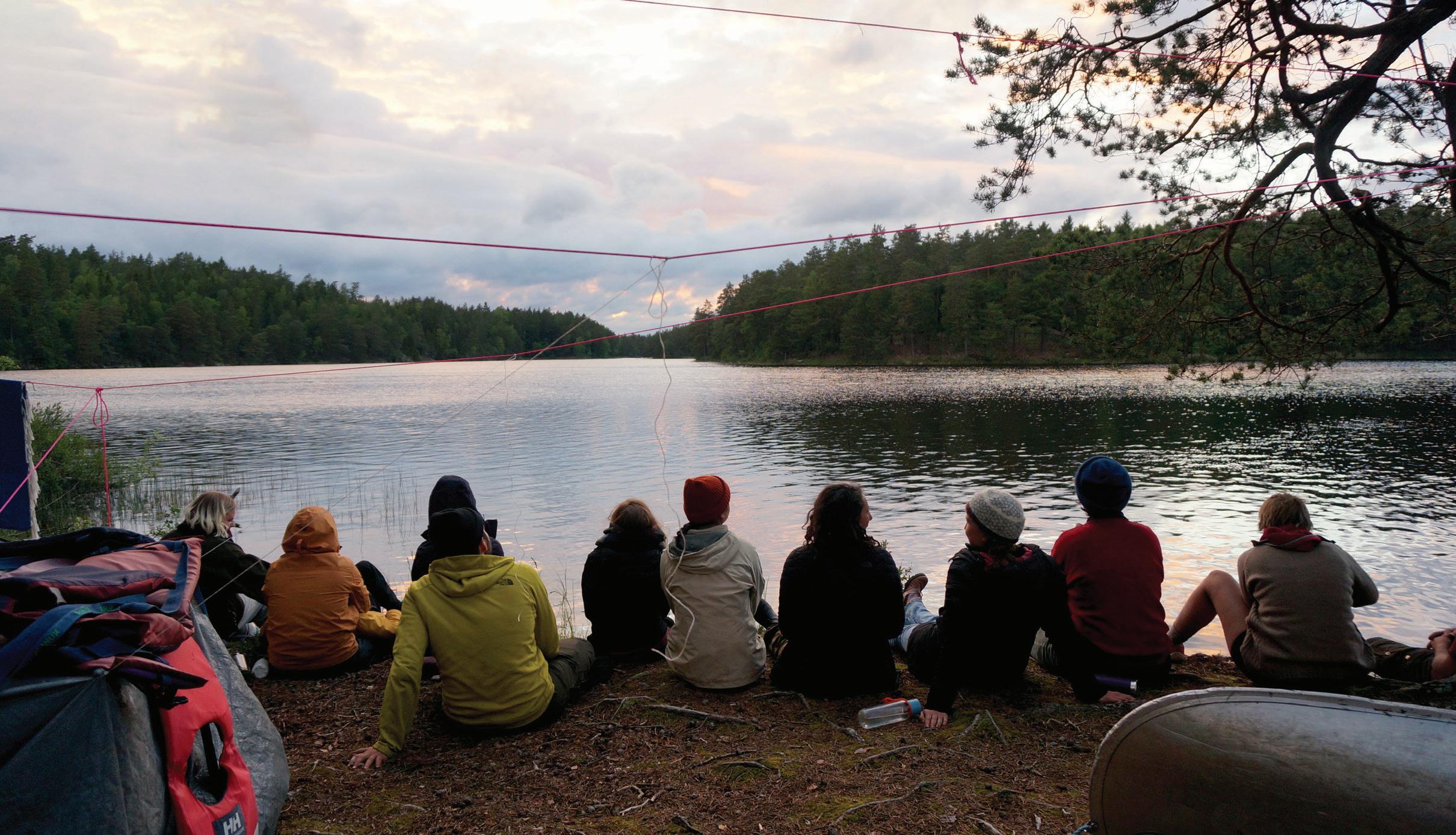
The term “societal entrepreneur” describes people who base their actions in service of the dignity and the worth of the collective. It was launched in 2008 as an educational approach that allowed young people to deepen their understanding of the challenges facing
the world today from practical, intellectual and social emotional perspectives.
YIP welcomes a different contributor every week who supports the participants in the morning courses. Contributors such as Gerald Häfner, Dr. Vandana Shiva, Dr. Gopi Krishna Vijaya, Roi Gal-Or, Christianne Aikins, Marcel de Leuw and Elias Romualdez investigate with the participants the challenges and issues within their fields of work, and inspire with their active involvement in positive, equitable change. Topics include Governance & Democracy, Regenerative Agriculture, Being Human in a Technological Age, Storytelling, War & Conflict, Human Development, and more.
IREN SOPHIAYIP HAS BEEN CRUCIAL FOR MY RECOGNITION, CULTIVATION, AND REALIZATION OF MY ROLE IN THE WORLD. THE HOLISTIC NATURE OF THE EDUCATION – WORKING WITH THE ENTIRE HUMAN BEING AND LEARNING ABOUT THE WHOLE PICTURE – IS WHAT DIFFERENTIATES YIP FROM OTHER PROGRAMS, AND WHAT MAKES IT SO NEEDED BY TODAY’S YOUNG PEOPLE.
The afternoon courses center around teamwork and initiative. Participants work together to plan their international internships with regenerative organisations around the world that work on issues such as education, agriculture, governance, community resilience and art. These include Sekem (Egypt), Navdanya (India), Elderberries Threefold Cafe (USA), and more. Further afternoons are spent in creative courses such as metalwork, art therapy, woodwork, and textiles, inspiring participants’ creative potential, or working in groups developing, harvesting and reflecting on learning, intentions, questions, and active initiatives.
The program does not demand outcomes and results but supports each individual’s self-defined aims and
objectives. We encourage each participant to value their own autonomy, creativity, and experiences, and take full responsibility for their learning and their impact in the program and community.

YIP understands the ultimate task of education to be creating the conditions in which human beings can unfold their authentic self-expression, assume responsibility for their unique purpose in life, and unlock their highest potential, while freely dedicating their gifts in service of the collective.

TO TRULY KNOW THE WORLD, LOOK DEEPLY WITHIN YOUR OWN BEING. TO TRULY KNOW YOURSELF, TAKE REAL INTEREST IN THE WORLD.

The setup almost sounds like a joke: Three politicians walk into a hotel kitchen one evening—a federal Liberal, an Ontario Progressive Conservative, and a New Democratic Party member from Saskatchewan. They walk out with a deal to make Canada a truly independent nation, change the way the country is governed, set an example to the rest of the world about how to entrench modern human rights into law, and reshape the sense of Canadian identity. But the scenario is no joke. In reality, it’s one vital step in the long journey that ultimately led to the patriation of the constitution and the creation of the Canadian Charter of Rights and Freedoms.
The Charter was adopted into law on April 17, 1982, when Queen Elizabeth II took to the stage in Ottawa to sign the documents that would officially put Canada in charge of its own constitution—an act referred to as “patriation”— and strip the final remnants of control away from the hands of United Kingdom parliamentarians.
Canada’s constitution defines the three branches of government (executive, legislative, and judiciary) and sets out which areas of governance fall under federal or provincial jurisdiction. The Charter, which is officially
viewed as a part of the Constitution of Canada, establishes the rights and freedoms that are necessary for Canadians to live in a free and democratic society. It is powerful, but not absolute; the rights defined by the Charter can be limited and even temporarily overridden. This feature is, in part, what allowed the constitution to finally be patriated, and serves as an example of modern human rights legislation.
Since its official founding as a country in 1867, Canada has been governed by a written constitutional document. The British North America (BNA) Act as it was then called (after patriation, it was renamed the Constitution Act, 1867) differed from the Constitution of the United States in that it wasn’t a self-governing document. Instead, it was a statute under the control of the U.K. Parliament.
It established how the British colonies of Nova Scotia, New Brunswick, and the Province of Canada (Ontario and Quebec) could be united, and how the new country would be governed, dividing up powers and responsibilities between the federal government and the provinces. The BNA Act did not address human rights and there was no amending formula, meaning Canada could not change it without the approval of U.K. politicians.
After witnessing the atrocities committed during World War II, human rights became the focus of political debates and reforms around the world. The Universal Declaration of Human Rights was proclaimed by the United Nations in 1948, and provided a basic blueprint for countries to build upon. Canada was no different. In 1960, parliament enacted the Canadian Bill of Rights
As Eric M. Adams, constitutional scholar, historian, and a professor at the University of Alberta’s faculty of law, explains, the Bill attempted to resolve questions about human rights in Canada “in a kind of classic Canadian way… with a compromise.” Rather than setting the rights into the constitution, which would require an amendment, the rights would be established via a statute with the promise “that the laws of Canada would respect these rights and freedoms,” he says.
“It didn’t take that long for people to criticize this effort as being inadequate,” Adams notes. “Its actual legal impacts were unclear [regarding] how could a law of parliament override a different law of parliament… Other than in a few small examples, the Bill of Rights, at least in terms of its legal interpretation, did not amount to much.”
During this time, there was a growing sense of nationalism in Quebec, which culminated in a referendum in May of 1980 to decide if the province should remain part of the Canadian federation or negotiate for more independence and a new constitutional arrangement. The province’s premier at the time, René Lévesque, won power by campaigning for separation.
Federal politicians stood against separation, especially Prime Minister Pierre Elliott Trudeau, whose Liberals won a majority election in February 1980, in part due to Trudeau’s insistence that his government would address the concerns of Quebec and renegotiate federalism, an action that would necessitate constitutional reform. When the referendum votes were counted, almost 60 percent of Québécois voted to remain in Canada.
“What Trudeau meant was that they were actually going to entrench [what are now called] Charter rights for French Canadians to protect them inside Canada forever, which meant he was committed to patriation and also to finding an amending formula,” explains Ron Graham, a journalist who not only authored books about constitutional history, but who also edited the memoirs of Trudeau and Prime Minister Jean Chrétien.
Without an amending formula, there was no roadmap for altering the constitution. Federal and provincial politicians began travelling the country, meeting with Canadians and listening to proposals about how the constitution should be amended, but even after months of that, no consensus could be reached. The federal and provincial views remained miles apart.
The provinces of Newfoundland, Quebec, and Manitoba, brought cases before the Supreme Court of Canada, essentially asking whether the federal government could act unilaterally to change the constitution by approaching the U.K. Parliament. In 1981, the Court declared that, yes,
the federal government could take that step on its own, but changes that limited the powers of the provinces should be made with their consensus.
Making one last attempt to create consensus, federal and provincial politicians joined together to form the Continuing Committee of Ministers on the Constitution, co-chaired by future Prime Minister Jean Chrétien, who was serving as federal justice minister, and future Saskatchewan NDP Premier Roy Romanow, who was his province’s attorney-general at the time.
The committee was at an impasse. The provinces wanted to cement control over natural resources, communications, and language. They were concerned about a loss of power and many of them—Quebec in particular—objected to Ottawa’s plan to include a rights section that could override provincial power.
“I would say that the fear by many of the premiers and provincial governments was the loss of identity, which wasn’t exclusively Quebec and French Canada versus English Canada,” says Romanow, while sharing his thoughts on the patriation process with TEACH. “Quebec, of course, did not want this to be established because the nine judges of the Supreme Court of Canada appointed by Ottawa, not by Quebec, were ultimately going to determine what the Charter of Rights and Freedoms said.”
Over the course of a four-day federal-provincial conference in Ottawa during November of 1981, no agreement could be reached. On the third day, Trudeau floated the idea of a national referendum.
That evening, spurred by the possibility of a referendum and knowing it was the last opportunity to reach a compromise, Chrétien, Romanow, and Ontario Attorney-General (and Progressive Conservative) Roy McMurtry met in a kitchen at the Château Laurier hotel (where all of the provincial delegations were staying, except for Quebec), and cobbled together an agreement.
During the night, premiers and delegations who weren’t part of the “Kitchen Accord” (with the exception of Quebec) were briefed on the deal. At breakfast the following morning, Lévesque was presented with the agreed-upon compromise. He angrily announced that he had been betrayed by the other premiers during “the night of the long knives.”
Although Quebec never agreed to the terms, the government had successfully engaged in a meaningful consultation process and had won the agreement of the vast majority of the provinces, meaning patriation could move forward. After undergoing some further discussions and fine-tuning, the essence of the Kitchen Accord compromise, which included both the Canadian Charter of Rights and Freedoms and a notwithstanding clause, is what now constitutes the Constitution of Canada.

Key to the Kitchen Accord was a concept called the “notwithstanding clause,” which became Section 33 of the Constitution. Section 33 allows a government to overrule even the most basic human rights provisions of the Charter for a period of up to five years.
Romanow calls the notwithstanding clause “the lastminute saviour” of the deal. “It’s kind of an awkward provision,” he says. “Here you’ve got a Charter of Rights and Freedoms like the Americans do. But then we had a provision saying: you can bypass it. But that was the way it had to be, that’s the only way we could compromise. Our country is very much a great country, a beautiful country, but it’s also complicated with respect to various different regions and histories.”
One of the functions of the notwithstanding clause, explains Y.Y. Chen, an assistant professor in the University of Ottawa’s faculty of law, is to “ensure that [when] there are some instances where … legislatures just clearly disagree with the judges’ interpretation of certain rights, they can still go ahead and do what they believe is in the public interest.”
A second function, Chen continues, is to “allow the courts to be bolder when it comes to the interpretation of rights, because the courts now can say, ‘Whatever we say is not going to be the last word when it comes to rights interpretation. We need not worry about the political repercussions. If the politicians don’t like what we say, they always have the option of invoking Section 33 and trying to explain that to the electorate.’ Some scholars say
that actually strengthens rights protection in an indirect way, fostering that dialogue between the legislature and the court, allowing the court to be braver when it comes to rights interpretation.”
It is not only the notwithstanding clause that places limits on Charter rights. Section 1 of the Charter references “reasonable limits prescribed by law as can be demonstrably justified in a free and democratic society.” In other words, it limits itself, and gives governments what they believe are the tools necessary to enact laws for the good of society, according to Javier Torres, an interpretative program developer at the Canadian Museum for Human Rights.
“[Section 1] comes into play all the time,” Torres says. “If our rights are limited, that has to be justified. The government has to justify it because those limits should help us build a more democratic society. For example, [laws against] hateful speech and the willful promotion of hatred [are] limit[s] imposed on our freedom of expression, but … that type of legislation is intended to promote our diversity as a country.”
The proposed Charter that came out of the Ottawa meeting was very similar to the Charter of today, with a few major exceptions, such as the rights of women and Indigenous peoples.
Women’s rights (Section 28) were eventually added after lobbying from women’s groups across the country. Section 25 makes reference to Indigenous rights, but doesn’t go much beyond saying the Charter should not “abrogate or derogate from any aboriginal, treaty or other rights,” leaving much room for debate and interpretation.
As to why those rights were neglected in the initial Charter, the reasons are complicated, says Ron Graham. “Some people will just say it was a mistake: you’ve got a bunch of men sitting in a room, and they’re thinking of other things. Certainly, once it was pointed out, it was very quickly solved.” But, he adds, that reasoning doesn’t excuse the oversight or provide the entire picture. Graham explains that Indigenous rights were seen as a possible threat
to the power of the provinces, especially when it came to control of natural resources.
Also, he says, Trudeau’s own approach to rights proved to be a barrier to inclusion. Specifically, Trudeau disliked the idea of collective rights. “Whether the collectivity was women, or whether the collectivity was Indigenous [peoples], or whether the collectivity was Francophones, [Trudeau’s] argument was that rights belong to an individual,” Graham notes. “You own the rights as an individual [and not as a collective group of individuals] ... I think women’s rights got caught up in that.”
There are other specific rights that weren’t directly included in the Charter, but, through court action, have become rights that Canadians can expect, and have given the document a life that reflects and drives today’s values, says Eric Adams.

“I think when you look at things like the arrival of samesex marriage, the legalization of medical assistance in dying, some of the most fundamental changes around the protection of the criminal trial process and the protection of the presumption of innocence… there are places you can point to and say, the Charter mattered,” he says.
“I think the Charter has had an impact on how Canadians perceive of their own rights,” Adams adds. “It has had an impact on what we might call our broader constitutional culture—that equality rights, the freedom of religion, that rights to life, liberty, and security of the person are fundamental to what it means to be Canadian, and that the law recognizes and protects that.”
CAROLYN GRUSKE is an award-winning reporter and magazine editor. She often writes about the intersection of business, technology, and the law, but she also has a deep interest in educational topics.
Since 1982, the Canadian Charter of Rights and Freedoms has served as a beacon for other nations to emulate, with some drawing on it to create or revise their own constitutions. At present, however, there are widespread misunderstandings of how the Charter works.

The drastic consequence of these misunderstandings was exemplified through a contentious protest: the “Freedom Convoy” of 2022. In this article, we’ll take a look at the rights and freedoms of people involved in the protest; why certain groups felt their rights were being infringed upon, why others believed they had absolute freedom, and what the Charter actually guarantees.
Starting on January 15, 2022, as part of the COVID-19 pandemic response, Canadian truckers were required to
be fully vaccinated in order to cross the border from the U.S. into Canada. Otherwise, they were subject to a twoweek quarantine coupled with a PCR test before arrival. (Unvaccinated American truckers would be denied entry altogether.)
Although almost 85 percent of the Canadian truck drivers who had cross-border routes were already vaccinated, there were several thousand who could potentially be affected by the new mandate. Immediately, the discussion of rights and freedoms began, with some truckers claiming that vaccine mandates and pandemic restrictions were infringing on their Charter rights.
Seven days later, hundreds of sympathetic Canadian truck drivers began heading to Ottawa. The convoy captured the attention of others who were against pandemic restrictions and quickly gathered support online. A GoFundMe campaign was set up to support the
drivers and $10 million was raised, although the campaign was later shut down by GoFundMe and the donations were refunded.
When nearly 20,000 protesters—many of whom had no connection to the trucking industry, according to the Canadian Trucking Alliance—descended on Parliament Hill a few days later, they created blockades throughout the streets of Ottawa’s downtown core.
Things soon escalated, with sightings of Confederate flags and swastikas in the crowd raising concerns about the motives of protesters and whether or not their movement was one associated with hate. Their behaviour was further called into question when at least one person was seen drinking and dancing on the Tomb of the Unknown Soldier,
a historic monument memorializing Canadian soldiers who died in combat—an act that was described as a desecration by Chief of the Defence Staff Gen. Wayne Eyre. Also, a statue of Terry Fox, cancer research activist and revered Canadian, was defaced with a vandalized Canadian flag and a protestor’s sign reading “Mandate Freedom.”
As the protests continued, workers at a nearby homeless shelter were harassed by protestors, as were several journalists, some threatened with racial slurs. Although police stated that there was neither evidence of violence nor injury, many of protestors were settling in for the long haul: setting up tents, shelter, and even hosting cookouts for fellow participants. Local businesses reported revenue losses as the downtown core was essentially shut down. Ottawa residents suffered from lack of sleep and increased anxiety due to the incessant barrage of blaring of horns erupting at all hours—some even experienced hearing damage. The smell of diesel fumes from the constantly running trucks also suffocated the air and permeated into residents’ homes. Locals described an overall “atmosphere of fear” and a “lawless world” created by the convoy.
Prime Minister Justin Trudeau announced that he would not meet with the protesters and condemned the movement as hateful and anti-science; however, they refused to leave until all COVID-19 restrictions were abolished. During the second week of protests, the City of Ottawa declared a state of emergency in response to the dangers being posed to local residents. But the situation continued to worsen until Trudeau invoked the Emergencies Act on February 14, which allows the federal government to take temporary measures to respond to major crises.
Over the next few days, police arrested more than 100 protestors and towed away dozens of trucks. Despite some of those who participated in the demonstration claiming they were free to protest as long as they wanted, and that their forced removal was yet another violation of their rights, the three-week long protest was finally over.
There are important conversations to be had surrounding how government responses to COVID-19 have impacted

Charter rights and freedoms. Bruce B. Ryder, an associate professor at Osgoode Law School whose research and publications focus on contemporary constitutional issues (including freedom of expression), says that emergency pandemic measures have undoubtedly placed extraordinary limits on freedoms enshrined in the Charter.
Unfortunately, there have been few informed discussions around the topic of Charter rights, and the lack of such conversations has led to an increase in heated political debates and controversial protests like the Freedom Convoy.
“I find it absolutely staggering how impoverished our public discourse about these limits has been,” says Ryder. “You see it in the mindless references to freedom as if just mentioning the word ‘freedom’ is self-defining. What do we mean by freedom? What do we mean by freedoms that are constitutionally protected by the Charter and that have special legal status?”
Section 2 of the Charter of Rights and Freedoms provides Canadians with four fundamental freedoms: “freedom of conscience and religion; freedom of thought, belief, opinion and expression, including freedom of the press and other media of communication; freedom of peaceful assembly; and freedom of association.”
While the Freedom Convoy exercised many of these freedoms, many people involved with the protest believed them to be absolute when, in reality, the individual freedoms and liberties outlined in the Charter are subject to certain limits.
According to Section 1 of the Charter, it “guarantees the rights and freedoms set out in it subject only to such reasonable limits prescribed by law as can be demonstrably justified in a free and democratic society.” Often these limits are invoked when the freedoms of one person come into conflict with the freedoms of others.
Although the truckers and their supporters were allowed to peacefully assemble, voice their thoughts, beliefs, and opinions, and associate with one another, the freedoms of people living in Ottawa also needed to be considered. The convoy blockades impacted the daily lives of local residents and their abilities to move freely
to work, school, or anywhere else. As well, the protestors’ incessant honking of horns upset the peace.
Emilie Taman is an employment litigator at Champ & Associates in Ottawa and is the co-host of the awardwinning podcast The Docket, a show dedicated to the discussion of complex and contentious legal issues. She is representing Ottawa residents and business owners in a class action lawsuit against the convoy. The lawsuit is open for any downtown residents who live in close proximity to the protest and have been affected by it.
The Statement of Claim for the lawsuit states that although protestors may have had the right to block roads and streets while exercising their freedoms of assembly and expression, “the serious, sustained and prolonged manner of the blockade of public streets [was] unreasonable and is not an activity protected by the Canadian Charter of Rights and Freedoms.”
This, along with behaviour that was not peaceful, such as the excessive honking of horns that “caused unbearable torment [for the residents] in the sanctity of their own homes,” not only violated the Charter, but several other laws as well.
“The real Charter issue implicated by the convoy had to do with the right to peaceful protest and where conduct crosses the line,” says Taman. “They seemed to think that they had an unfettered right to occupy the streets in Ottawa for as long as they wanted because there’s a Charter right to peaceful assembly and peaceful protest.”
But as with other freedoms in the Charter, the freedom of peaceful assembly is subject to “reasonable limits prescribed by law.” Thus, legislators and the police were tasked with determining when to intervene without infringing on the rights of protesters.
Any time a protest takes place, there is a careful balancing act for the police and government to follow when it comes to deciding if and when to step in. The rights of everyone must be taken into account, including those expressing dissent and those affected by the demonstration.
Basil Alexander is an assistant professor in the faculty of law at the University of New Brunswick, and has worked as a public interest and social justice lawyer. He has researched how Canadian courts approach the freedom of peaceful assembly, as well as how injunctions and criminal law processes affect demonstrations as they happen—such as in the case of the Toronto G20 Summit, the Occupy movement, and Idle No More.
Alexander says that when it comes to protests, the public often has one of two polarizing views on the matter: either they should not happen at all, or they should be allowed to proceed without any intervention whatsoever, both of which are unreasonable. In the middle of these positions is a space where important questions need to be asked, discussed, and debated.
“When I say I have the freedom to protest, how far does that go?” Alexander asks. “What types of protests am I allowed to do? Am I allowed to do it forever or for a certain period of time? How disruptive am I allowed to be? How far can I go in terms of engaging other people or affecting other people’s rights?”
By design, demonstrations are intended to be disruptive and draw intention to an issue. This is an essential component of democracy. Lines must be drawn, however, around reasonable limitations on freedoms and rights.
It’s not often a current event can so effectively illustrate how the Charter of Rights and Freedoms is a living and breathing document, one whose interpretation changes depending on the circumstances. It is by no means static, and the rights contained within it are not, as many believe, absolute.

As misinformation spreads, it’s important for the public, especially students and teachers, to have meaningful conversations about how the Charter operates, what it protects, and what limitations can be placed on rights and freedoms. After all, today’s young people could very well be tomorrow’s protestors; it is crucial that they understand the difference between a justifiable right to protest and what it looks like when things go too far.
DEIDRE OLSEN is a Canadian, award-nominated writer based in Berlin.
This year marks the 40th anniversary of the Canadian Charter of Rights and Freedoms. The Charter guarantees Canadians the basic rights to democratic and free life, but what about the right to nature? Some environmentalists argue that access to a safe and unpolluted environment should be a protected human right as well.
A landmark case is currently making its way through the legal system in Canada, the very first of its kind. Seven young climate activists are taking the Ontario government to task for failing to live up to several climate change targets. But it’s the argument these young mavericks are using that’s truly revolutionary: for the first time in Canadian history, climate change has been cited as a violation of a Canadian citizen’s Charter rights.
And what of natural resources that are taking the brunt of climate change? Should they be entitled to their own rights? An emerging concept in environmental law is the “rights of nature,” which recognizes that natural ecosystems have rights the same way humans do. These rights can be enforced through statutes, treaty agreements, or even added to a country’s constitution.
Queen Elizabeth II signed the Constitution Act on April 17, 1982, which was the last time Canada had to seek approval from Britain over its own governance before becoming a fully sovereign state. The Charter forms the first part of the Act, and guarantees seven distinct categories of rights and freedoms for every Canadian.
There is no explicit mention of nature or the environment in the Charter and there are currently no blanket provisions in Canadian law to enshrine natural features like lakes, mountains, or forests with rights of their own.
In contrast, other countries have given such rights to environmentally or culturally significant natural features. For example, the Ganga and Yamuna rivers that run through India were declared living entities with the same legal status as a person in 2017. The Constitution of India also includes a call to citizens to “protect and improve the natural environment including forests, lakes, rivers, and wildlife, and to have compassion for living creatures.”
In many legal systems, nature is often treated as nothing more than property, but New Zealand is leading the way in acknowledging that nature cannot be owned, and that people are not separate from or dominant over it. In 2014, Te Urewera National Park was the first natural resource in the world to be granted the same legal status as a person. It then was decommissioned as a natural park and renamed Te Urewera. Three years later, the Whanganui River was also granted legal personhood, in the same month as the Ganga and Yamuna rivers in India.
New Zealand laws emphasize that humans are expected to protect the rights of nature. Specifically, the country’s laws have incorporated philosophies of the Māori—the Indigenous Polynesian people of New Zealand—which include an expectation and responsibility to maintain the land and its resources for future generations, along with concepts of kinship and stewardship that are also central to Indigenous law in Canada. The Māori fought for over a century to obtain legal protection for ancestral lands and natural resources that they have deep connections to, and Indigenous peoples in Canada are doing the same.
Groups of people motivated to fight for an environmental cause can achieve great things, as Theresa McClenaghan, the Executive Director of the Canadian Environmental Law Association (CELA), explains: “People can fight to protect a natural feature and then use the tool of the law to argue for rights protection.”
Such as in the case of the Magpie River in Quebec. Although it took a decadelong fight, this beautiful river is now the first natural feature in Canada to officially attain legal personhood status. The Innu of Ekuanitshit, along with local environmental groups, worked tirelessly to protect the waterway, which has
deep cultural significance to the Ekuanitshit community.
Under Innu Indigenous law, the river was granted nine legal rights:
1 The right to flow
2 The right to respect for its cycles
3 The right for its natural evolution to be protected and preserved
4 The right to maintain its natural biodiversity
5 The right to fulfil its essential functions within its ecosystem
6 The right to maintain its integrity
7 The right to be safe from pollution
8 The right to regenerate and be restored
9 The right to sue
Unfortunately, McClenaghan says that economic interests often trump other rights in matters of environmental law, an argument termed “justified infringement.” The same argument is also used in Canadian Aboriginal Law against First Nations and Indigenous communities when forprofit companies have an interest in their land or natural resources.
“This decision was ground-breaking in Canada but it’s also untested. If Hydro Quebec comes along next year and wants to dam the river for hydropower, are [the Innu] going to be able to resist that?” McClenaghan asks.
Nature rights aren’t the only rights-based initiative for addressing the climate crisis; climate and environmental activists have also been working hard on a different approach. The David Suzuki Foundation launched the Blue Dot Movement in 2014, which aimed to incorporate the right to a healthy environment into Canadian law by amending Section 7 of the Charter. Ultimately, the movement has not achieved its initial goals, but it has made significant contributions to environmental protection in Canada. Some of its successes include encouraging over 30 percent of MPs to sign a public pledge in support of
environmental rights, as well as helping to bring Bill C-28—an Act to amend the Canadian Environmental Protection Act—to parliament. Bill C-28 recognizes that everyone in Canada has the right to live in a healthy environment.
Fraser Thomson is a lawyer at Ecojustice, Canada’s largest environmental law charity, and represents those seven Ontario youth who are taking the government to court. Armed with testimonies from 17 different experts, and bolstered by thousands of pages of scientific evidence, the Mathur et. al. lawsuit will argue that Ontario’s weakening of climate targets constitutes an infringement of the applicants’ Charter-protected legal rights to life, liberty, and security of the person.
The Mathur case, also known as #GenClimateAction, has been brought by a group of inspirational youth who range in age from just 12 to 23 years. Thomson explains the motivation that led them to this point: “Young people will bear the costs of this climate emergency even though they have done the least to contribute to it. They have so much at stake and the government has shown repeatedly that it’s not willing to do what’s necessary.”
Despite government attempts to thwart it, the group has won the right to have their case heard. “It’s a historic victory because it’s the first time any Canadian court has said that the harms caused by climate change could trigger our Charter rights, our most fundamental rights under our constitution,” says Thomson.
“Governments across not only Canada but around the world can expect lawsuits of this type, because climate change is an existential threat,” he adds. “It makes sense that citizens empowered to use human rights instruments will be doing exactly that to try and protect themselves and save the future.”
Thomson became interested in climate action as a young person himself but says that the threat always felt like a future problem. “Youth today are seeing the impacts of climate change, but they also know that the window to fix this is getting narrower and narrower,” he says. “They are very science literate. They know that the Intergovernmental Panel on Climate Change has said that we need to make severe reductions in our greenhouse gas emissions by 2030, and they are rightfully distressed.”
McClenaghan says that educators can inspire young people to get involved in climate action and environmental protection by checking their local environmental registry.
“People are entitled to know when a proposal is made for a new pollution permit in their neighbourhood, and to comment on it if the decision is unreasonable. It’s a great exercise to make these issues extremely germane and relevant to students; they can look up their neighbourhoods and see if something has been posted that’s affecting them,” she explains.
Tovah Barocas is the president of Earth Rangers, a charity that helps kids undertake environmental missions through an app. The organization also visits schools to deliver assemblies about conservation education.
Barocas says that it’s important to get kids involved as early as possible. “It’s the habits that we learn as children that we take with us for the rest of our lives,” she notes. “We’ve seen from previous generations that we spend a lot of time trying to break bad habits and relearn things in order to reduce our impact on the environment, and so it’s really critical to get kids to have those good habits right from the beginning so that they grow up to be responsible citizens.”
The Earth Rangers app, which is designed for children aged 6 to 11 years old, features an avatar and a selection of missions where kids can earn points by making sustainable choices like reducing single-use plastics or addressing food waste in their homes.
Barocas says that severe environmental impacts on many communities, like floods and forest fires, have led to fears and anxieties in a lot of children and teens. “Giving kids an outlet to make a difference and to see the impact of their actions is one of the main ways to combat eco-anxiety by transforming it into eco-action,” she adds.
Teachers can request a free in-school show or a virtual presentation by visiting the Earth Rangers website. Recently, the organization has also launched an educator's homeroom, with resources and lesson ideas,
plus a professional development micro-credential on how to address eco-anxiety in students.
Fraser Thomson, who has seen first-hand the difference engaged young people can make, has the following advice for kids and teens who are concerned about their environment: “Often there’s a paralysis of not knowing where to start, but if you read the histories of our youth in [the Mathur] case, it started very small, and now they’re tackling some of the biggest issues on the planet. Once you get moving, the momentum is easy to gain and every small action matters.”
Natural features in our country may not have specific rights under Canadian law, but our Charter rights can form the basis for activism to hold our leaders to their promises and help halt climate change. This is just another reason why we should all be celebrating this 40th anniversary of our most fundamental national rights.
FIONA TAPP is a former teacher and school administrator of 13 years. She writes about education, parenting, and travel for a variety of publications including National Geographic, the Globe and Mail, the Toronto Star, the Sunday Times, and many more.
In today’s world, where teenagers are evaluating issues from individuality to gender, and may be struggling to see how they fit within society, the Canadian Charter of Rights and Freedoms proves to be both important and timely. I see parallels between a document that outlines how we can live our lives as Canadians, and how teens can live their lives in an increasingly complicated world. In my experience with teaching the Charter, a great way to connect the priorities of fifteen-year-olds with the values of a significant document is by thinking like a teen. Here’s how.
To begin any unit of study on the Charter, first I like to introduce the Canadian Bill of Rights. Presenting the following scenario to my students offers a relatable analogy: “Imagine if there were ‘unofficial’ rules in your house that were set by one parent, but no rules were set by the other.
Now imagine the rules that do exist couldn’t be consistently enforced because neither parent had enough authority to provide the right structure and guidance. That would be confusing.”
Before the Charter of Rights and Freedoms was penned in 1982, Canada suffered from a similar situation. While the Canadian Bill of Rights enacted in 1960 was progressive for its time, it was not embedded in our constitution. It also lacked authority and applied to federal statutes (the parent with rules), but not provincial laws or general contexts (the parent without rules). Something had to change.
Students are given the chance to suggest some benefits and drawbacks of the Canadian Bill of Rights, then are asked to offer improvements. This makes for a great leadin to the Charter of Rights and Freedoms.
Why would the Constitution of Canada be housed in England and how would we get it back? For over 60 years,
2 2
Canada had been struggling with how to patriate the constitution, but possession and sharing were complicated, similar to the relationship between teens and their friends or siblings. But retrieving the document was only half the fight. The next question was: what should be done with it?
As students propose their changes to the Bill of Rights, they also begin learning about different agendas in Canada’s history, including the Quebec referendum, federal promises of reform, and provincial bids for more power. Everyone wanted something different from the revised constitution, and the challenge became identifying ways for each interest group to have input. Students are tasked with identifying methods for politicians and stakeholders to exchange ideas in an attempt to get “their stuff” included in the constitutional amendment.
Throughout our study of the Charter, all eight of Alberta’s identified competencies are integrated—starting with communication, critical thinking, problem solving, and collaboration. These skills are foundational to the rest of the unit, and so highlighting them at this early point is vital.
Whether it be between friends or “frenemies,” teens know how difficult conflict can be. They understand how drama can repel individuals and how a lack of drama can create new friendships. Thus, when they learn about the efforts that went into developing the Charter, how provincial and federal governments argued with each other but also worked together to create it, students can empathize.
They are able to identify with feelings such as distrust, anger, frustration, relief, and hopefulness that were associated with various perspectives.
Each student is given a journal and asked to connect their own experiences with those of the writers and contributors of the time. This not only allows students to gain a deeper understanding of how the Charter came to be, but also provides them with a healthy outlet for discussing their own emotions. It is here that the wellbeing competency comes into play.
One of our first discussions around the Charter itself is always centred on the fundamental freedoms laid out in Section 2: a) freedom of conscience and religion; b) freedom of thought, belief, opinion and expression, including freedom of the press and other media of communication; c) freedom of peaceful assembly; d) freedom of association.
How did these freedoms become foundational? Why these four? A global scan of issues in the preceding hundred years (famine, religious persecution, and lack of land, to name a few), along with an historic study of Canadian immigration and why people left other countries to come to Canada, provides students with answers.
Freedom is not to be taken for granted. Like a juvenile vying for more time away from the close supervision of parents, there are parameters that must be met in order to be given increased privileges. Students consider some of these parameters by completing “if/then” comparisons to link each fundamental freedom with an associated responsibility.
Some comparisons that students have given in the past:
• “If I am to celebrate the freedom of speech, then I need to be aware of appropriate time, place, and content.” —Richard
• “If I am able to assemble with others, then I need to ensure my actions respect that of the group and others.” —Tammy
• “If I am able to practice the religion of my choice, then I need to be accepting that others also have the same option.” —Iris
• “If I have freedom of speech, then I need to accept that not everyone may appreciate my viewpoint and the consequences of that.” —Terry
• “If I am able to protest publicly, then I need to be mindful of the safety and security of others. I also need to ensure that my beliefs and the actions of others are aligned, or excuse myself from actions that are not respectful.” —Ivan
Next, students are tasked with creating an individual collage that speaks to the importance of a selected freedom and includes icons, pictures, illustrations, and small items. From Lego Minifigures to religious artifacts, bumper stickers to social media screenshots, students depict their understanding of how the fundamental freedoms apply to themselves and other Canadians. Providing a visual arts component encourages students to be creative as they experiment with unique ways to present information.
While the concept of rights tends to be broad for youth, focusing on the Charter rights individually allows students to see how each one affects them. My class debates the language rights in Sections 16–22 of the Charter, and the logistics of recognizing Indigenous languages. We probe how the Youth Criminal Justice Act addresses the legal rights in Sections 7–14. We also study the historic case of Steven Truscott. By reviewing court cases where Charter rights have been challenged, students are able to express their ponderings about equality, equity, and justice.
Yet the greatest challenge often comes near the end of the unit, when students evaluate other historic Canadian documents using the Charter specs. Perhaps the most memorable cross-examination is that of the Indian Act, where students suggest changes to the Act that would modernize and align it with the Charter. Various language arts skills including persuasive writing, research, debate, and public speaking are highlighted throughout this task.
What are the limits of the Charter? Ask Harbhajan Singh or Shalom Schachter about equality. Ask Southham Inc. or David Oakes about legal process. Ask James Keegstra about absolution.
As students argue various viewpoints of these cases through role-playing scenarios, they begin to learn the true meaning of justice: impartial application of the stated rules. As a class we also analyze the fine lines between the letter of the law and the intent of law. Upon acknowledging
A student’s painting that reflects their understanding of the Charter

the role of the Supreme Court to apply justice, and how Canada has a clear process for delineating denotation from intent, students are able to gain an appreciation for the structure of Canada’s federal government. This also allows them to better comprehend the limits both within the Charter and beyond it.
The study of the Charter of Rights and Freedoms is vital to the development of young Canadians in that it frames the collective ideals of our diverse society and protects its values—including the plentiful and heartfelt opinions of teenagers.
To provide an outlet for their adolescent voices and youthful ideals, one year I had students write business letters to the Prime Minister. Throughout the study of freedoms, rights, responsibility, and justice, students were able to gain an understanding of the Charter and the promise it makes to all Canadian citizens. For this assignment, students were to evaluate the quality of that promise. In their letters, they pinpointed areas they felt needed improvement, supported their arguments with researched facts, and provided actionable recommendations.
The Charter of Rights and Freedoms was modern and trendy for its time. A document that meshed legislative and judicial mechanisms, while also identifying collective rights by naming the two key groups in Canada’s development, was not a fleeting fancy. Rather, the Charter set a standard for other nations on how to balance legal, multicultural, and pluralistic interests.
There were many “followers” within the Commonwealth who noted the benefits of collaborative dedication when developing a national guiding document. More than a trend, the Charter was seen as an exemplar, a role-model for modern development, a champion for progress.
During the review portion of the unit, students develop skills of personal growth and well-being within the context of cultural and global citizenship, the remaining two competencies.
Over the course of the six-week study of the Charter, I’ve seen students become passionate, opinionated, fair, just, creative, contemplative, moody, stubborn, and visionary. Similarly, those who knew Prime Minister Pierre Elliott Trudeau or the other creators of the Charter, say that the group displayed the same characteristics. But regardless of the complexities of teenage life and the many nuances of the Charter, one trait stands out above all else: joy. And if you look at the bottom-right corner of the Charter, there is a quotation from Trudeau himself:
We must now establish the basic principles, the basic values and beliefs which hold us together as Canadians so that beyond our regional loyalties there is a way of life and a system of values which make us proud of the country that has given us such freedom and such immeasurable joy.
JENEY GORDON is an administrator at a K–9 rural charter school of 300 students in Alberta. With 28 years of experience in education, her passions include alternative education, engagement, growth, and continuous learning.
*Student names have been changed.
Many students in our country may have realized from a young age that they are treated differently than their peers or other fellow Canadians. They know it’s not right, but don’t have the vocabulary or forum to express this. Then they come to school and learn about the Charter of Rights and Freedoms, a document stating that every person in Canada “is equal before and under the law” and has the right to be treated with respect and dignity.
According to a survey done by Statistics Canada, the Charter is considered the most important national symbol by Canadians, even when compared to hockey or the beaver. It represents the freedom and equality that is synonymous with Canada’s identity; however, is such a revered document truly universal in the human rights it promises to protect?
Perhaps part of all students’ education when learning about the topic should include recognizing that laws do not always operate as written on paper. In this article, we explore some of the ways the Charter has not succeeded in providing for all persons equitably.

While human rights and freedoms are, in theory, universal and equally protected for all, that has not been the reality here in Canada for Masuma Khan. She was attending Dalhousie University in 2017 when a personal Facebook post about not celebrating Canada’s 150th anniversary prompted disciplinary action from the school.
“[Those who have] the ability to express themselves in this country are not people that look like me,” she says. “As soon as racialized people, especially in academia, talk about what’s happening in terms of oppression in academia, we’re often shut up, disciplined, removed, kicked out of our positions, or fired. And then we have this mark that follows us everywhere we go, because they see us as troublemakers instead of people who are actively trying to make space for justice.”
Khan faced this traumatizing response from Dalhousie for personally choosing not to glorify Canada 150 given how it commemorated genocide. “I was trying to show some solidarity, broaden my own mind and my heart, build connections and do something at the grassroots level,” she explains, “and my university fed me to the wolves, as I was bombarded by white supremacists. [Meanwhile], Jordan Peterson actually can get away with saying whatever he wants. … Again, it comes down to privilege and race.”
Across the country, Tonya Kent, a criminal defense attorney, remembers sitting in a law class at the University of Saskatchewan when somebody asked, “‘What about reverse racism?’ [They were] talking about the fact that the school wouldn’t accept money from a donor [who specified] the money go to someone who didn’t have Indigenous heritage.”
Although it may be easy to dismiss Kent’s experience as a reflection of a rural setting, she notes that she heard similar stories from law school students who attended the University of Toronto and Osgoode Hall Law School, both of which are located in the heart of Canada’s largest city. So location changes little, it seems.
“How can you say that our human rights are the same,” Kent wonders, “when you are treating people differently on the basis of race?”
Faisal Bhabha, Associate Professor at Osgoode Hall Law School, describes human rights as being like a religion.
“You either subscribe to it or not,” he says. “I think human rights reflect values that are close to a religion, like deep moral values. We see that [as] human rights evolve. In 1948, [with] the Universal Declaration of Human Rights, even the most progressive minds did not take into account rights of gender identity, sexual orientation, etc.”
Bhabha previously served as Vice-Chair of the Human Rights Tribunal of Ontario, where he interpreted and applied human rights. That, combined with his lived experiences with inequality and discrimination as a racialized person, makes him critical of the Charter, which is supposed to provide universal human rights. “It’s never capable of promoting true equality because it’s tethered to capitalism, white supremacy, and all other systems of oppression,” he says.
Kent has seen these oppressive systems at work since practicing as a lawyer in Toronto. “When [it comes to] the Charter and access to basic human rights,” she says, “access to your rights is going to rely on your race, your financial ability, etc. The only legal services that are provided without having money are criminal and family law services, nothing else.”
In this way, many of the Charter’s rights require money to address, if violated. “You only have Charter rights when someone advocates for them,” Kent adds. “[But] if you lost your job because someone discriminated against you for being LGBTQ+, for being Black, for being a woman, whatever it is, that [legal fight is] not covered [by Legal Aid]. So if you are marginalized, you are just going to have to suck it up and move on, generally.”
Kate Welsh, a white non-binary person, researcher, settler, artist, disabled activist, and counsellor, understands this well. As someone who uses a walker and a wheelchair depending on the day, they have lost out on multiple job prospects due to inaccessible settings.
“In disability justice communities, instead of having [discussions about] the right to live, discussions are happening [about how] people with disabilities are in poverty,” Welsh says. “And because of the disability and poverty cycle, the marginalization of provincial disability programs, discrimination around housing, employment, [and] education, disabled folks are dying with the use of Medical Assistance in Dying (MAID) as Canada has not given them the right to life, liberty, and security.”
Bhabha, who has conducted research in the areas of disability rights and access to justice, is familiar with these inequalities. “No matter how much people understand their rights, everything costs,” he says. “Once people start to realize that rights cost money to enforce, that has a very damaging effect … on their perception of what they’ve been told in school.”
There is more nuance in human rights than most people are comfortable with, he adds, which is why it’s important to talk about such issues with students, rather than shy away from them.
In a previous role as an outreach coordinator for a nonprofit youth support organization, Masuma Khan recalls doing a school workshop on oppression that prompted a debate about the Charter of Rights and Freedoms. During the discussion, she heard a teacher state, “You can be a white supremacist, but you just can’t vocalize your views.”
While it may have not been the teacher’s intent to condone white supremacy, Khan was concerned about the missed opportunity to address bigotry. The avoidance of such conversations, whether intentional or not, makes it hard for her to imagine a time when minority communities will ever be equal under the law.
When Bhabha thinks back to own his experiences as a high school student, he believes that his teachers should have been more careful about the exercise of their power over kids. Even if they thought they were doing something positive, they may still have been silencing marginalized students.
“I was interested in the Israeli-Palestinian conflict as a high schooler, [from] a human rights perspective,” he says. But there was a climate of teachers “trying to maintain sensitivity around anti-Semitism, which, although necessary, tend[ed] to overreach, and ha[d] the effect of silencing Palestinian students or people that [were] interested in the Palestinian narrative,” he explains.
In Bhabha’s opinion, this created a culture of antiPalestinian racism in the public school system. “It’s unfortunate,” he adds, “because it highlights for a lot of immigrant kids that the Charter’s protections are not enforced equally.”
Students and other young people who feel disenfranchised by the Charter and the human rights it’s supposed to protect still have power and can affect change. One way they can do so is by getting involved with organizations that are working to address inequality issues. Kate Welsh recommends the Disability Justice Network of Ontario, which has a Youth Action Council.
Welsh also feels strongly that students need to find communities that align with their intersections. Connecting with community is crucial, Welsh says. “Without that, you may feel like you have to do things on your own, [and] you can feel defeated ... That’s how systemic oppression keeps you down.”
Bhabha agrees. “Oppression has the effect of diminishing a person’s sense of self and trampling on their dignity,” he adds. “And so, a person who doesn’t think that society values them equally is less likely to access what society has to offer… including [services and institutions] that could help improve their sense of self by remedying the injustice.”
But by joining a likeminded community and contributing to a movement, students can learn to advocate for themselves. Even something as informal as talking with elders can be beneficial, Welsh notes, because they are often open to mentoring youth on ways to promote equity.
“It’s about growing the pie, so that everybody is included,” says Bhabha.
KRYSTAL KAVITA JAGOO, MSW, RSW, is an equity practitioner, educator, and artist. Her writing has appeared in such publications as Prism, Everyday Health, Healthline, and Auto Trader.

For many newcomers to Canada, learning is often steeped in urgency. Learning a new language, navigating a new community, and understanding the customs and expectations of a new culture can feel critical to survival. But it is important for our students and their families to do more than just survive this transition. We want them to thrive, and to feel empowered to become active and engaged members of their communities.
This is why I love helping my newcomer students learn about the Canadian Charter of Rights and Freedoms, and why I think it is so critical that we take the time to engage actively with the Charter’s contents in our classrooms.
Before my students delve into the Charter of Rights and Freedoms, we always start by looking at the Canadian Bill of Rights (1960). As a legal landmark in its own right and the precursor to the Charter, the Bill of Rights has the added benefit of being much shorter. This makes it a great starting point for introducing English Language Learners (ELLs) to concepts and vocabulary relating to human rights.
As a class, we read and discuss the meaning of each article. We not only translate key terms where needed, but find synonyms in both English and the students’ home language(s), to help them better understand these new words and concepts. Wordreference.com is a great resource for this stage of the task.
Next, we make our learning visual. While there are a number of ways to approach this, my favourite method is with sticky notes. After discussing each right, students draw a picture or symbol on their sticky note that they feel best represents it. They then choose a key word from the article and write it somewhere on the sticky note, along with the most useful synonym they have identified (in any language).
Once we have discussed every article, students place all their sticky notes on our “rights wall.” They can then review the notes of their classmates, and add some of these new terms or drawings to their own master note sheet. The collection of visuals and synonyms gives students the opportunity to see different representations or “applications” of the rights that they may not have considered themselves.
Once we have interpreted the Bill of Rights and discussed its importance, I ask
the students my favourite question: “What is wrong with this bill?”
I am inevitably met with a room full of shocked faces every time, with a few exasperated arm raises or outbursts added in for greater effect. “Why would you tell us it’s good if there’s something wrong with it?” is a question I usually hear some variation of.
“Why do we edit our writing, even once we feel we have mastered the format?” I ask in return.
“To find mistakes and make it better.”

So I encourage them to look at the Bill of Rights and see what mistakes may have been made, or if there is something that was not included but they think should have been. Some years, hands fly up quickly from students eager to share their ideas. Other years, the silence lasts so long it is almost painful.
Depending on a student’s background, experience, or cultural upbringing, they may feel reluctant to criticize the government (even as a theoretical exercise). For others, their education may have consisted solely of memorizing information shared by “experts” (i.e. the teacher or textbooks), with the practice of questioning that information—either to clarify or criticize—being considered highly disrespectful.
Sometimes, students may just need some help getting the ideas ball rolling, and in that case I find tying the task to their immediate surroundings is often most effective. As our ESL classes typically include a variety of ages, one of my favourite prompts is to ask for some responses “from the oldest students only. They know better.”
Cue chaos. As the students debate about whether or not my approach is fair, I follow up very casually with: “Who says I can’t pick based on age?” There are usually a few students who catch on quickly and notice that there is no protection against age-based discrimination in the Bill of Rights.
I give them time to look for other “missing pieces” in the bill (rights they believe should be included, forms of discrimination needing to be recognized, etc.) and to craft suggestions for new articles on their own or with peers. This task is also a way of making predictions about the Charter of Rights and Freedoms.
Students research the correct term they should use for their idea, appropriate synonyms, and create a symbol. They add these to a sticky note, and then are given the opportunity to share their ideas with the class, explaining why they are important to include before adding them to the “additions” section of the wall.
For many students, this can be a very liberating and empowering experience. Those who come from countries with strong human rights laws can be eager to participate and share examples of policies in place there, describing what this looks like in practice. Other students—particularly those who moved to Canada to escape conflict, persecution, or marginalization—may draw on their own experiences to highlight freedoms or protections that they feel should be offered to all. While teachers should be mindful that these conversations can often be difficult for some students, such opportunities can also provide them with an avenue for participating in conversations that they may not have felt confident in contributing to otherwise.
For all students, regardless of background or experience, discussions like these are important in validating perspectives and opinions, and developing not only an understanding of human rights, but building students’ vocabulary and confidence in advocating for themselves and others.

After we have completed our discussions of the Bill of Rights, we move on to the Charter of Rights and Freedoms (1982). As a longer document, it can take more time to review, but by now students may have the confidence to tackle interpreting sections of the Charter on their own in small groups. This is a great way to scaffold the lesson, giving teachers the chance to circulate and gauge understanding, while also providing additional opportunities for ELLs to work on their skills in reading, summarizing, oral speaking, and collaboration.
I like to have students share their work through a class slide deck (these can easily be made using Google Slides). Each group edits a single slide, adding key terms,
doodles, or found images relating to the information. An oral explanation can be provided “live” in class, or through recorded voice notes that students can listen to outside of class time. This slide deck has the added bonus of being a useful study resource when students are preparing for evaluations.
As findings are shared, we identify which of our proposed additions to the Bill of Rights have been reflected in the Charter, moving the sticky notes from the “additions wall” to the “rights wall.” New articles that we had not predicted also get jotted down on sticky notes and added to the “rights wall.” We take time to discuss what these mean, the benefits they offer, and how we see these rights reflected in our school or community—or more significantly, how they are not.
If time permits, a great final step in studying the Charter is a “take action” component, which allows students to take an active role in advocating for their own rights and those of others in their community. This ties in particularly well with the Civics curriculum, but is a great task for any class studying the Charter. Individually or in small groups, students identify a right that they feel is important, but is not being upheld well either in the school or their community.
Students choose the audience they think can best make meaningful change (fellow students, school administrators, community members, town council, etc.) and choose a format appropriate to this audience through which they can share their suggestions. Students can send letters or emails off to their recipients, share flyers or posters around the school, or use a multitude of other formats.
By engaging critically with the Canadian Charter of Rights and Freedoms, newcomer students develop more than just a broader vocabulary or sharper analysis skills. Allowing students to interact with the Charter, and use it to take action in their own lives, helps them see they have a voice in their new community, and empowers them to use it.
ALEKSANDRA TRIVAN JOHNSTONE is a secondary ESL teacher in the Halton District School Board.
GRADES: 10 TO 12
SUBJECTS: CANADIAN STUDIES ENVIRONMENTAL EDUCATION
INDIGENOUS STUDIES SOCIAL STUDIES
DURATION: 3 TO 4 CLASSES
This lesson plan explores the concept of human rights versus the rights of nature. Why should nature have rights? What should those rights look like? Students will learn about the Canadian Charter of Rights and Freedoms, and consider how it can be revised to incorporate rights for nature.
The Canadian Charter of Rights and Freedoms was signed into law on April 17, 1982 by Queen Elizabeth II. It forms part of Canada’s constitution and is an essential part of our democracy. The Charter protects many rights and freedoms of Canadians, including the right to equality, freedom of expression, and the right to life, liberty, and security. These rights are human rights, and they govern how people in Canada live and interact with each other, as well as their relationship with the government. However, in the face of ongoing climate change and environmental degradation, environmentalists around the world are beginning to argue that human beings aren’t the only ones who deserve rights.
An emerging theory of environmental law, known as the “rights of nature,” recognizes that nature itself has rights too, which can be added to a country’s constitution, enforced through statutes, or by granting legal personhood to entire ecosystems. By recognizing the natural environment as a “legal person,” direct legal action can be taken if it is harmed, whereas in the eyes of most laws today, nature is seen as human property, and any environmental damage inflicted upon it must be shown to violate human rights before action can be taken.
Nature may not be able represent itself in court, but much in the same way that children are appointed guardians to act on their behalf, when an ecosystem is declared as having rights, it is entitled to the right of legal representation by its own guardians. Often these guardians belong to local Indigenous communities who have a long-standing relationship with the ecosystem and are well-versed in its care and management. Thus, the rights of nature
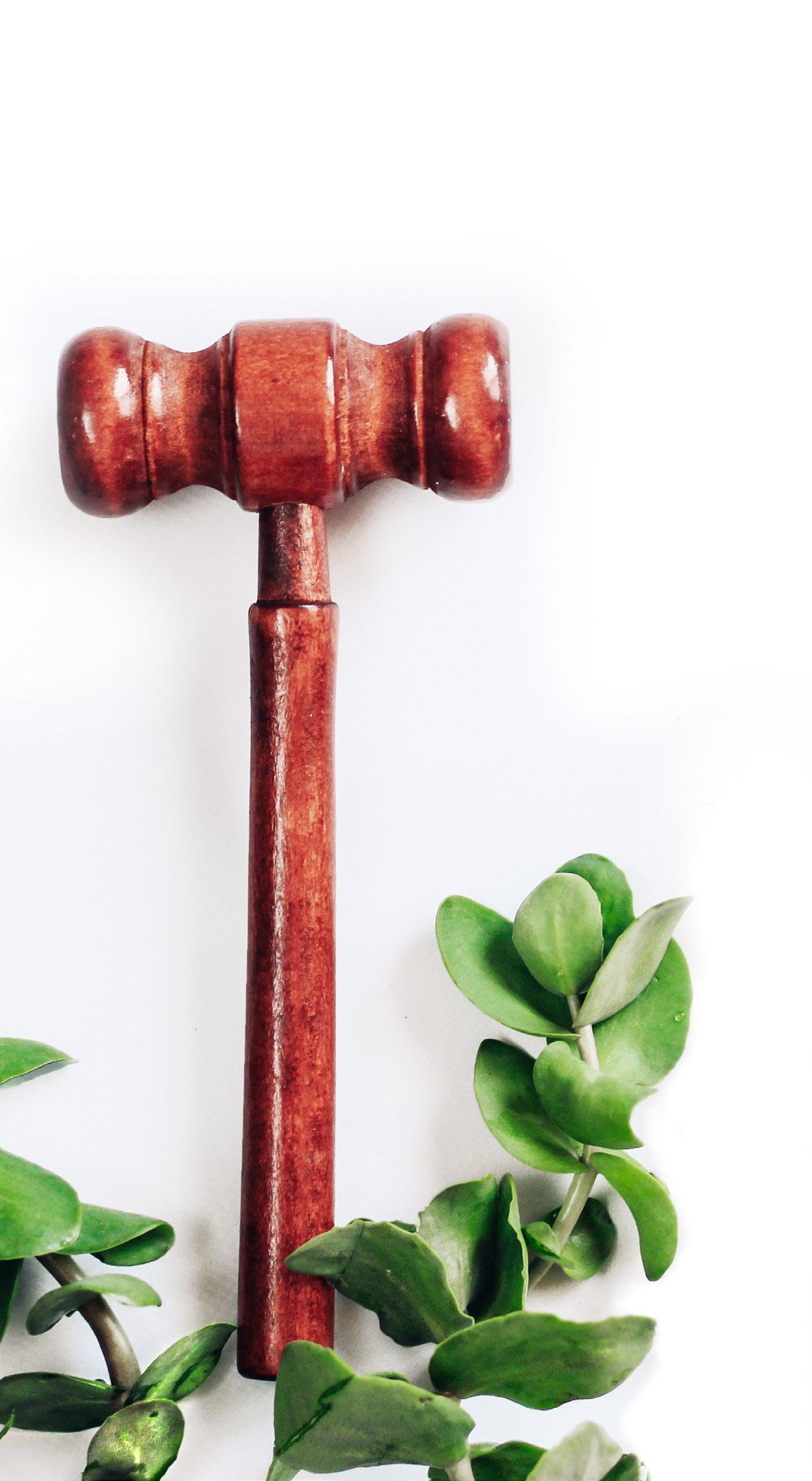
framework also provides a legally empowered stewardship role for Indigenous groups and their traditional territories.
At its core, the rights of nature movement is a modern version of longpracticed Indigenous laws. In many Indigenous cultures, humans and nature are deeply connected. Traditional Indigenous knowledge and belief systems are based around the importance of living in balance with nature, and of respecting and protecting the environment for future generations. The rights of nature movement embraces these ways of thinking, and looks at how to balance what is good for human beings against what is good for nature and, ultimately, the planet as a whole.
Students will:
• Increase their knowledge of the Canadian Charter of Rights and Freedoms;
• Interpret and analyze information and evidence from legal cases;
• Apply and extrapolate Charter rights in different contexts;
• Examine the process of amending the Charter;
• Explain how to generate calls to action for specific purposes and audiences through multiple formats;
• Communicate their ideas using various formats and styles.
• How can the Charter be used to protect natural environments?

• Should nature have its own rights and, if so, what should some of those rights be?
• What can be done to build a more harmonious relationship between people and nature?
1 STEP ONE TEACHER-DIRECTED DISCUSSION
1. Ask students to share what they already know about rights and freedoms in Canada. Record their answers.
2. Introduce the Canadian Charter of Rights and Freedoms, and explain that it makes up part of Canada’s constitution, which is the supreme law of Canada. Show a copy of the Charter, then read and discuss the rights and freedoms together as a class. Compare these with the student-generated list.
3. Display a slideshow of images that showcase different Charter rights in action. (For example, a photograph of protestors to represent the right to peaceful assembly, or a newspaper article to represent freedom of the press and freedom of expression.) Have students consider which Charter rights are being depicted in each image. End the slideshow with an image of a healthy natural environment and again ask students to think about which rights are represented. Introduce them to the concept of rights of nature.
2
Explain to students that current laws often treat nature as a commodity and only focus on benefiting government, people, and companies. Today, when environmental issues are raised in court, people have to prove that these issues violate their individual human rights because nature has no rights of its own. However, if nature were to be treated as a rights-bearing entity, then nature rights could be defended in court too, just like human rights.
What does this look like in practice? In recent years this has been accomplished by granting entire ecosystems “legal personhood” status so their rights can be upheld through law, and then appointing guardians (often from local Indigenous groups) to help enforce those rights and represent the ecosystem in court if need be.
Students will work together to look at examples of how rights of nature are being implemented across the world. Divide students into five groups, with each group researching one case:
• Atrato River, Colombia
• Ganga River, India

• Magpie River, Canada
• Te Urewera, New Zealand
• Turag River, Bangladesh
In their groups, students will answer the following questions and share their findings with the class:
1. What is the ecosystem being protected?
2. Why does it need protection? (Briefly summarize the environmental issues surrounding the case.)
3. What was the legal decision that was made?
4. What rights has the ecosystem been given?
5. How are those rights being enforced and who is responsible for enforcing them?
As a class, discuss how the rights of nature in each case compare with the human rights outlined in the Charter of Rights and Freedoms.
Watch the brief video, “Connecting Biodiversity to Our Humanity,” about Indigenous worldviews and land stewardship. As briefly mentioned in the video, Canada has committed to protecting 25 percent of its lands and oceans by 2025 to address climate change and biodiversity loss. Explain to students that recognizing the rights of nature can help to accomplish this goal, while also helping Indigenous peoples protect their homelands.
Working in pairs or individually, students will research and decide on an ecosystem in Canada that they think should be given its own rights. Using the Charter as a guide, they will develop a list of at least five rights for their chosen natural entity. When creating their list, have students think about:
• The environmental issues being faced by the ecosystem;
• Who is connected to the ecosystem and what do people use it for (food, water, transportation, shelter, etc.);
• Whether their proposed rights would interfere with the rights of people connected to the ecosystem;
• Who would be best suited to protect the ecosystem;
• How Indigenous environmental stewardship practices can be incorporated.

As part of Canada’s constitution, the Charter can be modified if a strict set of rules known as the “amending formula” are followed. These rules require the federal government, along with two-thirds of the provinces (as long as they make up 50 percent of Canada’s total population) to approve any proposed change. So far there has only been one successful amendment to the Charter: in 1983, several additions were made to Section 25, which discusses Indigenous rights.
For the first part of the culminating activity, each student will devise an amendment to the Charter that would incorporate the rights of nature.
One of the most effective ways to bring about change is by raising awareness of a specific issue. Often public awareness can put pressure on political institutions to address that issue.
• Students will come up with an awareness campaign to inform others about the rights of nature, why it should be added to the Charter, and how this can be done, using their Charter amendments proposed in Part 1.
• Campaign options include: social media, letter writing, posters, podcasts, and other methods to spread the word. Students are welcome to incorporate more than one of these options.
• When creating the campaign, students should keep in mind who they think needs to hear this message, and what is the best way to reach that audience.
Offer an opportunity for students to view their classmates’ work. This can be done through a gallery walk, virtual or in-person presentations, etc.
Afterwards, students will individually compose a short piece in response to the following prompts:
• In what ways do you feel your plan for an action campaign was successful?
• Are there any changes you would make to improve your work?
• What resonated with you throughout this learning activity?
• Do you have any remaining questions?
• What role can you as an individual play in enforcing the rights of nature?
1. Incorporating the rights of nature into Canada’s constitution can be a step in the right direction for addressing climate change, but more needs to be done. To support student empowerment, have the class consider how their actions and the actions of young people around the world can make a difference. Students can conduct research to discover what youth climate activists are doing, or the class can watch a video that introduces some of these activists (such as “Rebellion,” an episode of CBC’s The Nature of Things, hosted by David Suzuki).
2. Watch The Rights of Nature: A Global Movement documentary, then engage in a class discussion:

• The film mentions that although the rights of nature movement is one way to begin addressing the climate crisis, there is no single method. What are some other actions that can be taken?
• Why do you think it is important to live in harmony with nature?
• What are some changes you can make to your lifestyle in order to reconnect with nature?
• What do you think a universal declaration for the rights of nature should look like? (To continue this exploration, look at the Universal Declaration of the Rights of Mother Earth and compare it with the Universal Declaration for Human Rights.)

• Canada’s Department of Justice website has plenty of useful infographics and learning resources for teaching the Charter.
• As an example of how nature rights can be entrenched in a country’s constitution, look at Chapter Seven of the 2008 Constitution of Ecuador
• The Earth Law Center offers plenty of educational resources and initiatives related to the rights of nature, including mock trial workshops, Earth Law clubs, a STEM-focused lesson plan, and more.
• The Global Alliance for the Rights of Nature (GARN)’s Youth Hub hosts youth panels and events, as well as a Rights of Nature Bookclub.

• Another rights of nature bill is currently making its way through Quebec’s legal system: An Act to Grant Rights to the Saint Lawrence River. Read more about the proposed bill in this article from Quebec’s Métro newspaper.
• “The Rights of Nature: Canadian and International Developments in Granting Legal Rights to Rivers” explores the rights of nature through the context of the Canadian legal framework.
teachmag.com/great-canadian-books


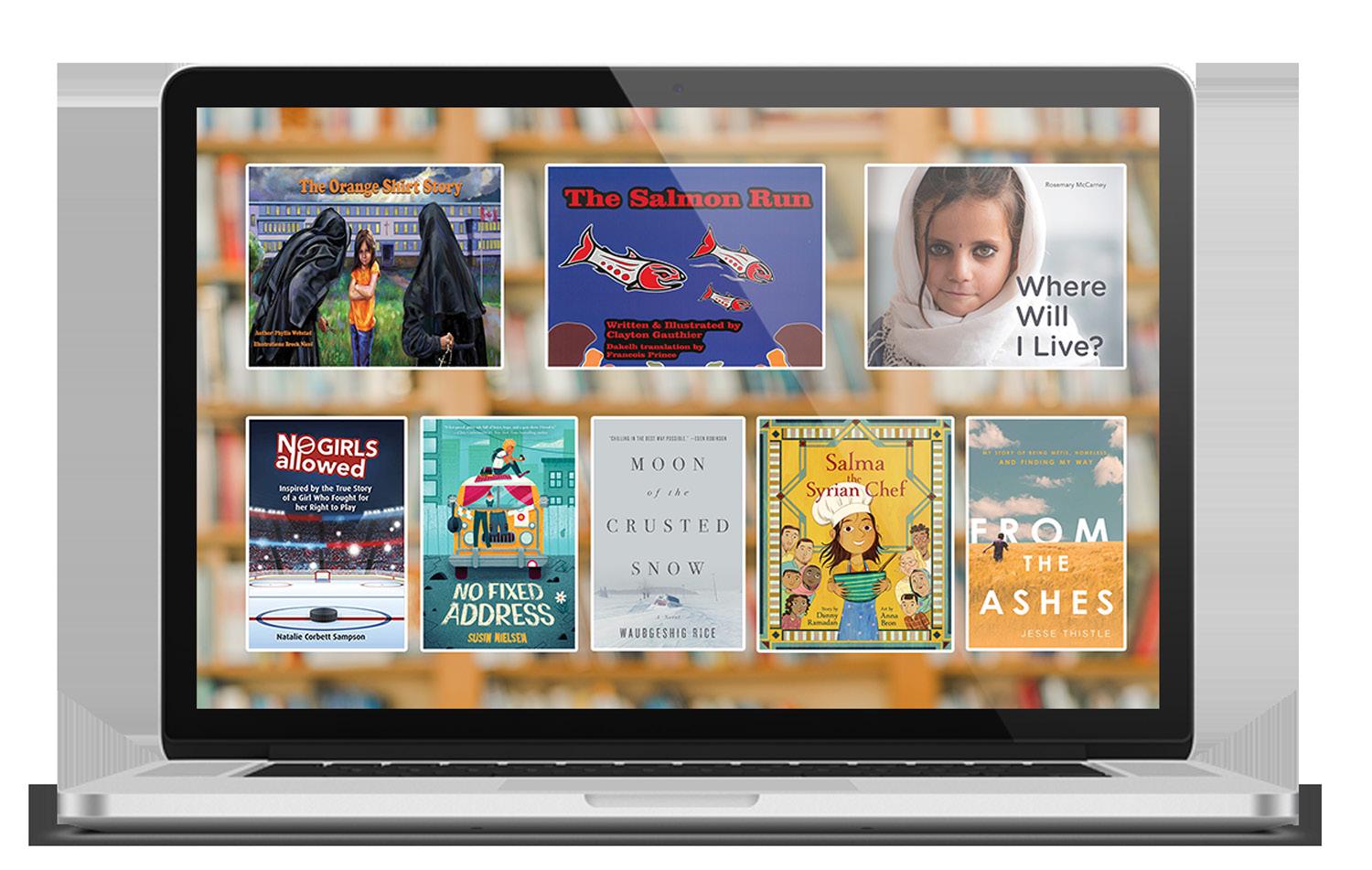 TEACH is excited to launch a new video series in collaboration with Canadian School Libraries! These videos showcase Canadian titles as valuable teaching tools to help engage students.
TEACH is excited to launch a new video series in collaboration with Canadian School Libraries! These videos showcase Canadian titles as valuable teaching tools to help engage students.
